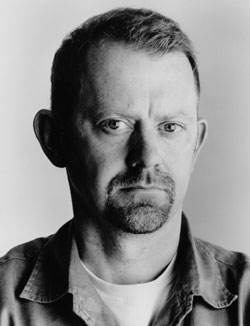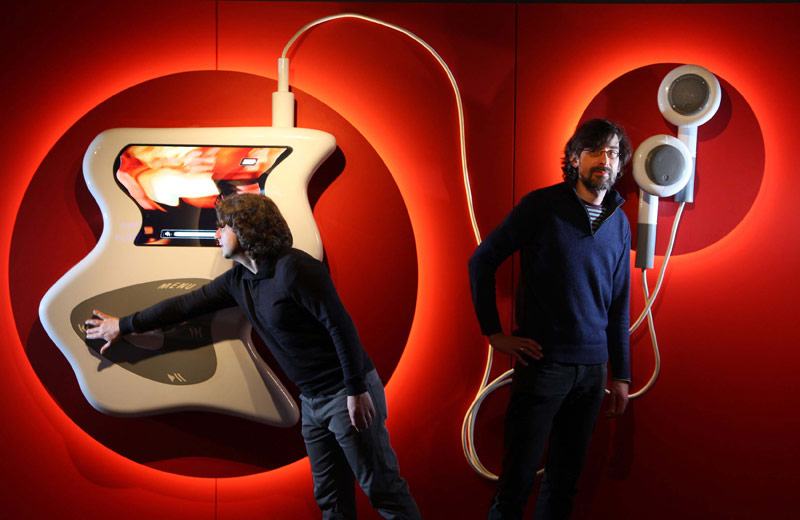
Mick Jackson is a prize-winning author and screenwriter, who has recently become our new writer-in-residence. Throughout his residency he will be regularly keeping us up to date with blog posts – here’s the first.

Mick Jackson is a prize-winning author and screenwriter, who has recently become our new writer-in-residence. Throughout his residency he will be regularly keeping us up to date with blog posts – here’s the first.

Alexei Shulgin from media art production company Electroboutique answers some questions about the new pop up exhibition at the Museum.

Not everyone knows that the Science Museum is home to an ongoing contemporary arts program, so we thought we would give you a bit of an update about what we have going on in the Museum art-wise.
This is undoubtedly our most famous painting: Philip J. de Loutherbourg’s 1801 ‘Coalbrookdale by Night’, a noisome depiction of the industrial revolution in all its terrible glory. Here are the ‘Bedlam furnaces’ in action – open coke hearths used for smelting iron, the visible face of a burgeoning coal industry. But if we dig a little deeper, we find a rich and little-known iconographic seam in the Science Museum’s art collection. For one thing, what de Loutherbourg saw at Coalbrookdale was […]
After nearly a century’s banishment, one of the most notorious of all alcoholic drinks is set to return to its… er… spiritual homeland, France. Distinctively green and extremely powerful, sales of absinthe have been banned there since 1915. Its geographical origins may lie in Switzerland, but absinthe is forever associated with the bohemian and artistic circles of Paris of the late 19th and early 20th centuries. Not that it was a peculiarly French habit. With its main ingredients of fennel, anise and the […]
My post on January 21st marked the anniversary of the execution of King Louis XVI. Clearly, January was a bad month for European monarchs historically, as the 30th marks the anniversary (the 362nd!) of the be-heading of another flamboyant ruler – Charles I of England – in 1649. The battered little heart-shaped jet pendant amulet above commemorates this particular royal execution. It would have been worn as a piece of mourning jewellery and, like other memento mori, a reminder of death […]
How many uses can you think of for red cabbage? Not as many as James Watt I’ll bet… His friend William Nicholson wrote a Dictionary of Chemistry in 1795. The entry for red cabbage reads: BRASSICA RUBRA – Mr Watt finds that red cabbage affords a very excellent test, both for acids and alkalis; in which it is superior to litmus, being naturally blue, turning green with alkalis, and red with acids. The description of how he prepared the cabbage […]
Whether its Santa Claus, Kris Kringle or Father Christmas, we have quite a fixed image (soft-drink company influenced?) in our heads of what the man delivering presents down the chimney should look like. But could this be what the original ‘Santa’ really looked like…? This rather charming tabbarded fellow in our collections is Saint Nicholas. He looks distinctly un-santa-esque because he was in fact the Bishop of Myra (now south-west Turkey) during the third century. Pictured with three children, it’s not surprising to […]
Oh we all love a royal wedding. With memorabilia manufacturers wasting no time to issue commemorative souvenirs featuring Prince William and his future missus, Kate Middleton, it’s an opportune moment to examine a few monarchical mementoes from our own collections… Mugs to celebrate the marriage of Charles, HRH Prince of Wales and Lady Diana Spencer, were presented to child patients at the Lord Mayor Treloar Orthopaedic Hospital, Alton, England. I’m rather a fan of this royal silhouette vase (Can you see it? Can […]
It’s that time of year when leaves cover the ground, there’s a chill in the air, and household pets look distinctly nervous. Hallowe’en has just passed and tonight will see fireworks displays throughout Britain as the bonfires are lit for Guy Fawkes Night. But even the most spectacular pyrotechnics would be hard-pressed to beat these 17th-century creations. This engraving is from the Science Museum Library‘s copy of Pyrotechnia or, A discourse of artificial fire-works, written by John Babington and published in 1635. […]
Philippe-Jacques de Loutherbourg (1740-1812) was born in Germany and studied in Strasburg and Paris. He became artistic adviser at the Drury Lane Theatre from 1771-81. As an innovative set designer and scene painter, he helped to lay the foundations of pictorial illusion in stagecraft. After abandoning theatre in the 1780s, he became an important figure in British landscape painting. The Science Museum holds one of his most famous works, ‘Coalbrookdale by Night’, 1801. This epitomises the romantic view of the growth […]
James Watt died 191 years ago today. He was considered one of the most important engineers in the country, and after his death he was turned into a national hero. The result was a slew of statues, memorials and paintings – some of which will go on show in a new exhibition opening in spring 2011. More details to follow… When Watt was 59, his friend and partner Matthew Boulton introduced him to Carl von Breda, who painted the earliest portrait that that Watt was […]